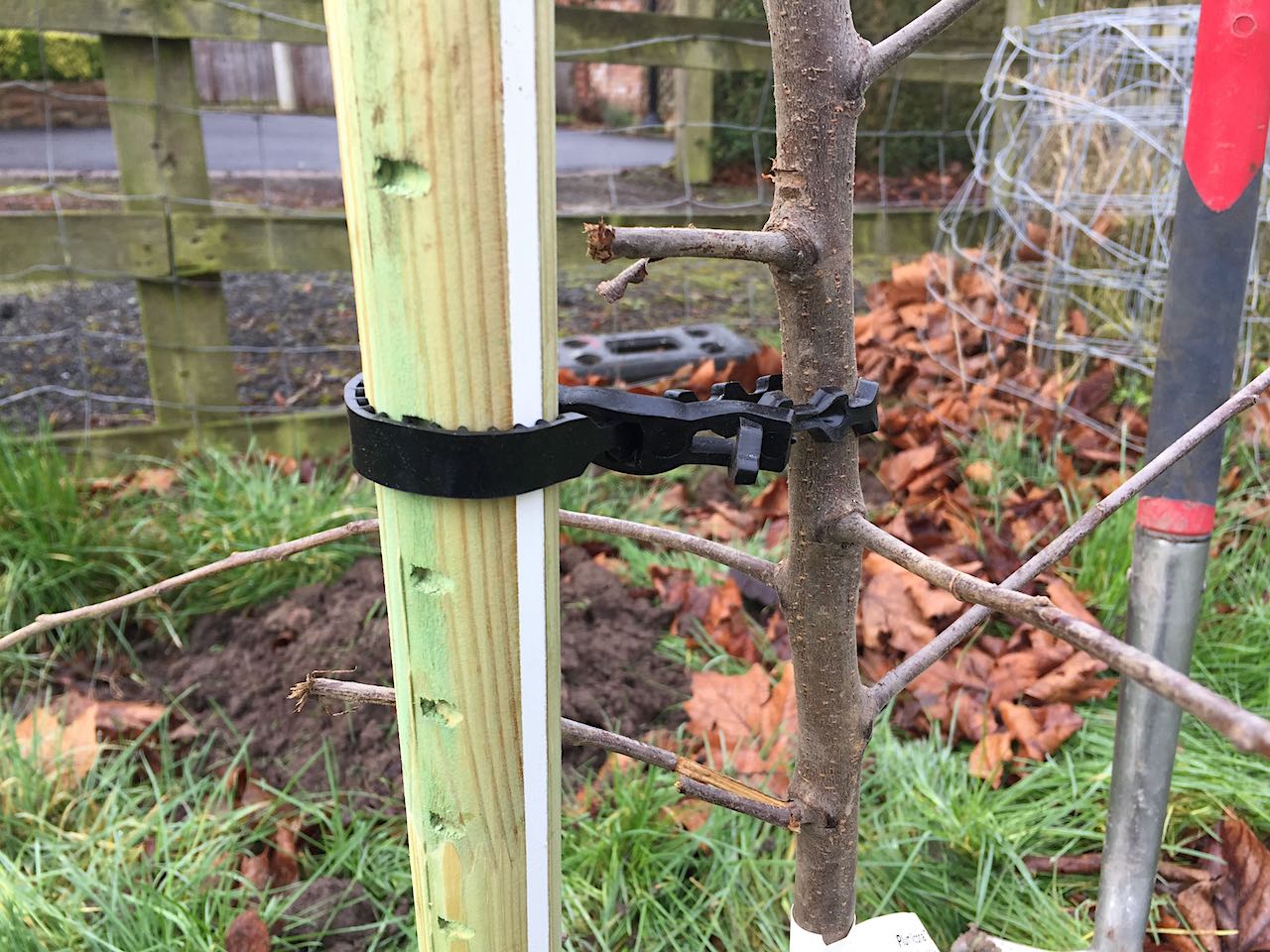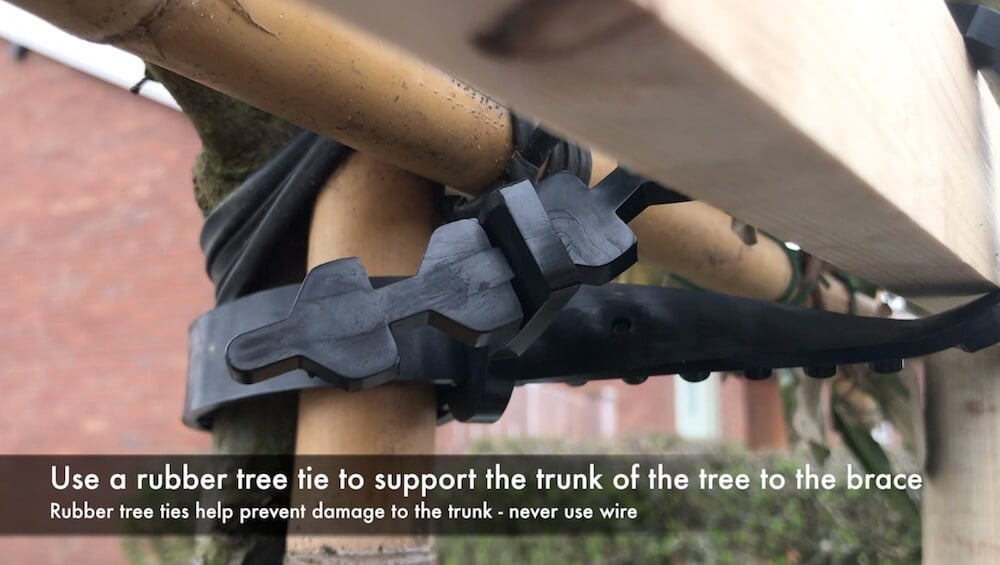Hi Hornbeam (Love the name!)
That's a really good question and I'm going to answer it in two parts to make it easier for everyone looking for tree tie advice.
1.How to tie in a tree:
The first part is that nearly all new trees that are planted need staking and support. This is usually done with a wooden stake or framework. We then need to tie the tree to that support to give it some protection but not smother or choke the tree. The ties need to allow the tree to flex and prevent rubbing/abrasion to the main trunk.

For this, I always use rubber tree ties. See how the rubber grip part on the left goes around the stake and the slacker smaller part around the trunk? This is so you can easily expand the trunk part as it grows so it doesn't rub.

Wire and string can easily cut into young juvenile trees and damage their main support system; their trunks. If the bark gets rubbed and worn away it can expose the tree to infection or if the abrasion runs all the way around the trunk it will kill the tree. This is also known as ring barking which sometimes rabbits do to young trees when they nibble all the way around a trunk. This stops the uptake of water and nutrients and effectively kills the tree.
2.How to tie in pleached trees:
Pleached trees need their main branches tying into the framework whilst they establish. I use rubber chord for this which you can buy or sewing elastic that can at least stretch. Then once established you can cut these off.

However, once its fully established I tend to prune off most shoots that exceeded this frame work. I only tie in shoots to fill gaps. Again I use a bit of rubber chord or elastic. If you catch the shoots early before they thicken up you can usually carefully flex them back into the frame and weave them under another branch for support without any restraint! This is the easiest option.
You can use jute rope which does rot down after a few months but please remember to keep the knot loose and remove as soon as the branch thickens. Checking them every few months.
I hope that helps you and anyone else looking to tie in a tree!
Lee
Hi Hornbeam (Love the name!)
That's a really good question and I'm going to answer it in two parts to make it easier for everyone looking for tree tie advice.
1.How to tie in a tree:
The first part is that nearly all new trees that are planted need staking and support. This is usually done with a wooden stake or framework. We then need to tie the tree to that support to give it some protection but not smother or choke the tree. The ties need to allow the tree to flex and prevent rubbing/abrasion to the main trunk.

For this, I always use rubber tree ties. See how the rubber grip part on the left goes around the stake and the slacker smaller part around the trunk? This is so you can easily expand the trunk part as it grows so it doesn't rub.

Wire and string can easily cut into young juvenile trees and damage their main support system; their trunks. If the bark gets rubbed and worn away it can expose the tree to infection or if the abrasion runs all the way around the trunk it will kill the tree. This is also known as ring barking which sometimes rabbits do to young trees when they nibble all the way around a trunk. This stops the uptake of water and nutrients and effectively kills the tree.
2.How to tie in pleached trees:
Pleached trees need their main branches tying into the framework whilst they establish. I use rubber chord for this which you can buy or sewing elastic that can at least stretch. Then once established you can cut these off.

However, once its fully established I tend to prune off most shoots that exceeded this frame work. I only tie in shoots to fill gaps. Again I use a bit of rubber chord or elastic. If you catch the shoots early before they thicken up you can usually carefully flex them back into the frame and weave them under another branch for support without any restraint! This is the easiest option.
You can use jute rope which does rot down after a few months but please remember to keep the knot loose and remove as soon as the branch thickens. Checking them every few months.
I hope that helps you and anyone else looking to tie in a tree!
Lee
 Lee Burkhill: Award Winning Designer & BBC 1's Garden Rescue Presenters Official Blog
Lee Burkhill: Award Winning Designer & BBC 1's Garden Rescue Presenters Official Blog



